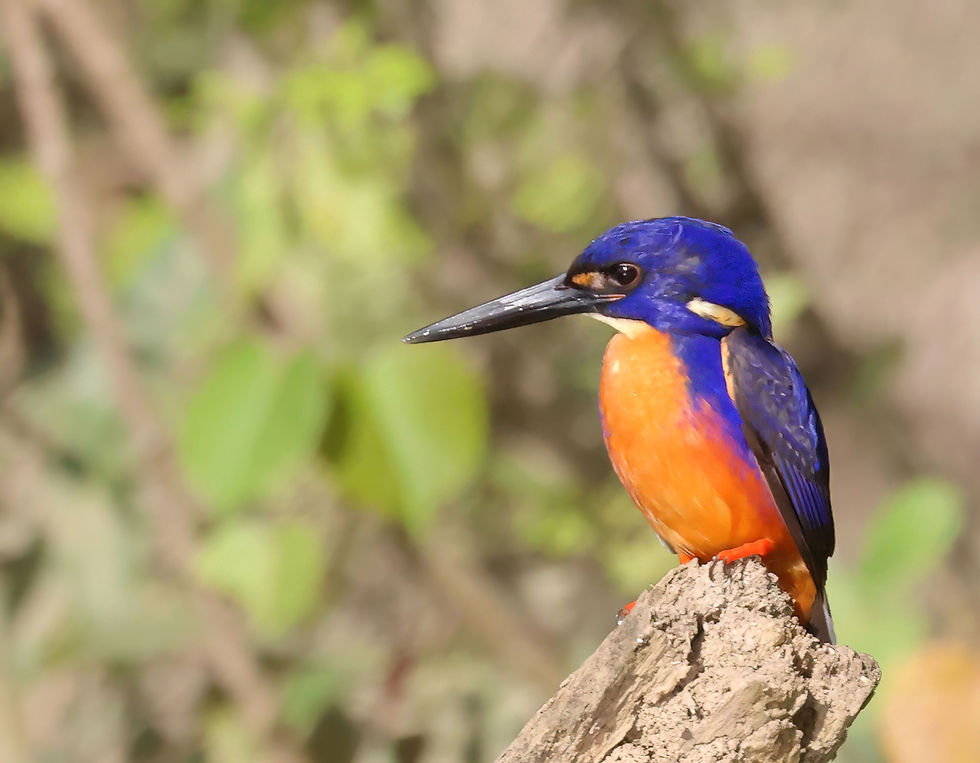Warrina Lakes parkland, Innisfail, birding outing: October 2025
- Geoff Stapley

- Oct 31
- 4 min read
Updated: Nov 4
Geoff Stapley | Guest Contributor
A bit of news for you birders: the proposed wetland in the Cassowary Coast Regional Council (CCRC) Strategic Master Plan for Warrina Lakes is coming to fruition.
Working with local First Nations groups, a new wetland shaped like an eel is planned to join the drainage system on the southern border with the main lake. The eel-shaped wetland will have a north-south orientation in the large open grassy area in front of the western forest edge. The plan includes shallow wetlands with rushes and sedges, and a smaller deeper section with water lilies.
Also on the plan is a viewing platform. BirdLife Northern Queensland (BLNQ) local reps have had a tour of the site with project leader, Damon Sydes, and bird hide design was a hot topic. We’ll need to be patient as a bird hide is not part of the initial plan. However, bird hide designs have been exchanged and we are hopeful that a bird hide, rather than a viewing platform, will eventuate. CCRC is hoping to commence initial construction soon.
BLNQ will continue to liaise with CCRC to achieve the best environment and birding outcomes possible. It’s great to see CCRC recognizing the environmental importance of Warrina Lakes as well as the tourism potential of the site. The regular visits by groups of international visitors with cameras and big lenses attest to the fact that the lakes parkland is on international birding itineraries.
And now to our Sunday outing on 12 October…. The day was looking good weather-wise for all those traveling to Warrina, but on arrival things had changed and it started lightly raining. Not to be deterred, ten participants including visitors from as far away as Cairns, the Tablelands and Tully/Mission Beach, headed out birding.

A nearby Cassowary Pine (Barringtonia calyptrata) was in bloom and the birds were relishing it, resulting in a carpet of fallen flowers under the tree. There were Rainbow Lorikeets; Helmeted Friarbirds; Dusky, Brown and Yellow Honeyeaters; and Sahul Sunbird. Our walk revealed more of these stunning trees in flower scattered around the parkland, usually with a suite of nectar-feeding birds.

As we crossed the bridge into the botanic gardens section, a sizable nest was seen hanging over the drain though the nest owners were not home. Maybe it was an oriole? We were to see a fair bit of nest activity during the outing.
Our bird list started to grow as we saw familiar birds such as Pacific Black Duck; Orange Footed Scrubfowl; Raja Shelducks; and Australian White Ibis. Above were Australasian Figbirds; Yellow (Green) Orioles; Varied Triller; Mistletoebirds; and Peaceful Doves, with Double-eyed Fig Parrots flying overhead. A Leaden Flycatcher was seen chasing insects, and Large-billed Gerygone was heard nearby. A Pale-vented Bush-hen scuttled out and back into low vegetation in the Pandanus swamp, and another was heard calling further over.
Spring was in full swing. Our local botanical expert, Silvia, pointed out a variety of flowering plants as we wandered along: Weeping Bottlebrush (Melaleuca viminalis); Bull Oak (Cardwellia sublimis) which was in bud; Black Bean (Castanospermum australe); White Apple (Syzygium forte); Cassowary Plum (Syzygium hemilampram hemilampram) which was in bud; North Queensland White Beech (Gmelina fasciculiflora); Native Gardenia (Atractocarpus fitzalanii fitzalanii); and the red-flowered Freshwater Mangrove (Barringtonia acutangula).
A quick wave from our leader and we were all soon onto a Barred Cuckoo-shrike very high above, and at a nest feeding a youngster. What a surprise! Although we were around 30 m from the bird, we didn’t dally, to ensure we didn’t disturb them.
With a few spots of rain up came the umbrellas. Exploring the north-eastern corner of the parkland, we spotted another cuckoo high on an exposed dead branch and in poor light: but which species? Determining its identity had a few heads being scratched, but a good photo helped us get a conclusive identification (ID): it was an adult female Sahul Brush Cuckoo, the pale barred morph.

As we returned to the main lake area, the light rain was still hanging on. A voice called, “Let’s stop for an early cuppa and hope conditions improve”. All agreed, so we headed to the shelter and thoroughly enjoyed a social, shared morning tea.

Conditions did improve so we set off again. While walking around the lake edge we spotted Little Black Cormorant drying off and a Comb-crested Jacana, then another on the water lilies.

Across the lake was a Pied Cormorant. We were also rewarded with good views of Forest Kingfishers, an Australasian Darter, and a Great Egret as we circumnavigated the lake.

Those who braved the short rainforest walk were a bit disappointed as no new birds were seen or heard.
As we turned for home along the back drain, Brown-backed Honeyeaters were busy nest-building in branches hanging over the water on the lake’s edge, as well as the drainage channel – we saw at least eight nests under construction.
Finally, two Krefft’s Turtles (Emydura macquarii krefttii) had come out for a break now the sun was shining – at the end of a great morning’s birding.

A total of 285 individual birds from 44 species were recorded over the morning: not bad considering the fickle weather.




